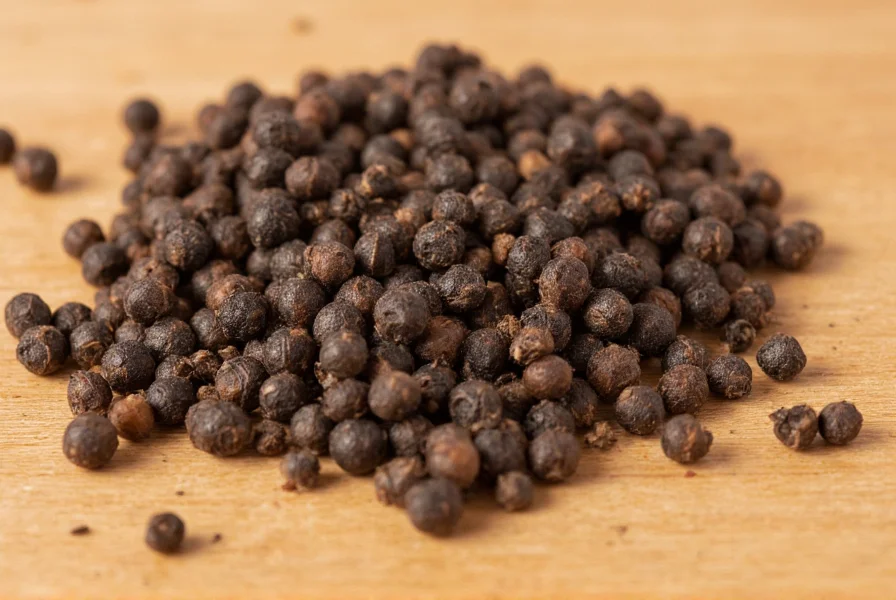Black pepper, or kali mirch as it's commonly called in Hindi and Urdu, represents far more than just a kitchen staple in South Asian cooking. This ancient spice has journeyed from Indian markets to global tables, maintaining its status as the "king of spices" for good reason. Understanding kali mirch goes beyond recognizing it as a simple seasoning—it's a culinary cornerstone with scientific backing for its wellness properties.
Historical Significance of Kali Mirch
Black pepper's history stretches back over 4,000 years, with evidence of its use in ancient Indian Ayurvedic medicine. Roman traders valued it so highly that it was often used as currency—hence the phrase "peppercorn rent." During the Middle Ages, pepper was so valuable that it was stored in locked chests and weighed like gold. The quest for direct access to pepper routes literally shaped world history, motivating European explorers to seek sea routes to India.
Culinary Applications of Black Pepper
Kali mirch enhances dishes across multiple dimensions:
| Culinary Use | Recommended Form | Flavor Profile |
|---|---|---|
| Curries and gravies | Freshly ground | Sharp, pungent heat that mellows during cooking |
| Marinades | Coarsely crushed | Penetrates proteins while adding texture |
| Finishing dishes | Freshly cracked | Bright, aromatic notes with immediate heat |
| Dry spice blends | Fine powder | Even distribution of flavor throughout mixture |
Chefs prefer using whole peppercorns and grinding them fresh because pre-ground pepper loses its volatile oils and potency within weeks. The timing of when you add black pepper to dishes significantly affects the final flavor—adding it early creates a more integrated heat, while adding it at the end preserves its sharper notes.

Scientifically Supported Health Benefits
Modern research validates many traditional claims about kali mirch's health properties. Piperine, the active compound in black pepper, demonstrates several beneficial effects:
- Enhanced nutrient absorption: Studies show piperine can increase the bioavailability of certain nutrients by up to 2000%, particularly for compounds like curcumin in turmeric
- Antioxidant properties: Black pepper contains significant antioxidant compounds that help combat oxidative stress
- Digestive support: It stimulates digestive enzyme production, potentially improving digestion and reducing bloating
- Anti-inflammatory effects: Research suggests piperine may help reduce inflammation markers in the body
Unlike many health fads, black pepper's benefits are supported by numerous peer-reviewed studies. However, it's important to note that these benefits are best realized when consumed as part of a balanced diet rather than through supplements.
Selecting and Storing Quality Kali Mirch
When purchasing black pepper, look for these quality indicators:
- Uniform dark color with minimal broken pieces
- Strong, sharp aroma when crushed between fingers
- Heavy weight for size (indicates moisture content and density)
- Origin information (Malabar or Tellicherry varieties are premium options)
For optimal freshness, store whole peppercorns in an airtight container away from light and heat. Properly stored, they maintain peak flavor for 1-2 years. Ground pepper loses potency much faster—typically within 3-4 months. Serious cooks always prefer grinding their own pepper just before use for maximum flavor impact.

Understanding Pepper Varieties
While kali mirch specifically refers to black pepper, confusion sometimes arises with similar spices:
- Kali mirch vs. kali zeera: Black cumin (kali zeera) has a completely different flavor profile—earthy and smoky versus black pepper's sharp heat
- Black vs. white pepper: White pepper comes from the same plant but with the outer layer removed, resulting in a milder, earthier flavor
- Green peppercorns: These are unripe peppercorns, offering a fresher, fruitier note compared to mature black peppercorns
Understanding these distinctions helps home cooks and professional chefs alike create more nuanced dishes. In traditional Indian cooking, kali mirch appears in everything from simple tadka tempering to complex spice blends like garam masala.
Practical Cooking Tips with Kali Mirch
Maximize your use of black pepper with these professional techniques:
- Toast whole peppercorns lightly before grinding to enhance their aromatic compounds
- Use different grind sizes for different applications—fine for baking, coarse for meats
- Add black pepper to milk-based dishes early to prevent curdling while infusing flavor
- Pair with fats like ghee or oil to better extract and distribute its flavor compounds
- Combine with other warming spices like cinnamon and cardamom for balanced heat
Remember that black pepper's heat differs from chili peppers—it's a warming sensation rather than burning heat, making it versatile across sweet and savory applications. The next time you reach for that pepper mill, appreciate that you're using one of humanity's oldest and most scientifically validated culinary treasures.










 浙公网安备
33010002000092号
浙公网安备
33010002000092号 浙B2-20120091-4
浙B2-20120091-4